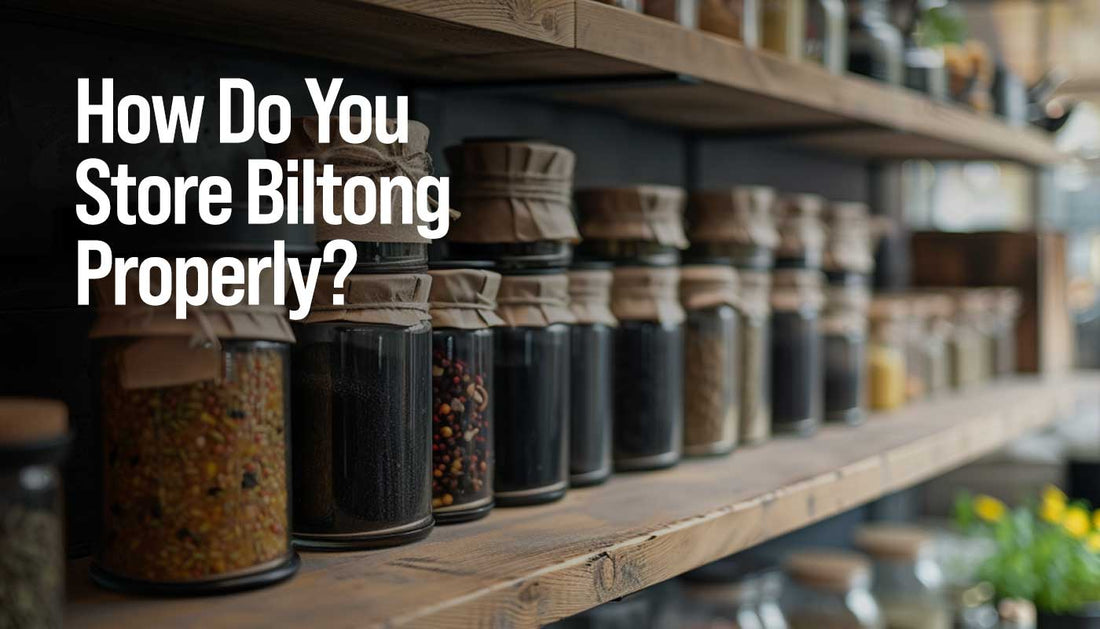How do you store biltong properly? Biltong is a perishable product and without proper storage methods your Biltong may be spoiling quicker than it should. This little guide will help explain how to keep biltong from going bad, ensuring that it remains fresh, flavourful, and safe to consume.
Understanding Biltong
Biltong is a dried, cured meat originating from South Africa but has become increasingly popular worldwide, including in Australia. Its unique preparation method, which involves curing the meat with vinegar, salt, and spices before drying it, gives biltong its distinctive flavour and texture. However, this drying process also means biltong can be susceptible to spoilage if not stored correctly.
The Importance of Correct Storage
Proper storage is crucial for maintaining the quality and safety of biltong. Incorrect storage can lead to moisture build-up, which is a breeding ground for bacteria and mould. The Australian climate with its variable temperatures and sticky humidity levels poses additional challenges for storing dried meats like biltong.
Short-Term Storage Tips
For those looking to store biltong for a short period (a few days to a week), the key is to balance air circulation with moisture control. Here are some tips:
- Air Circulation: Store biltong in a breathable container or bag, such as a paper bag or a cloth pouch. This allows air to circulate around the meat, reducing moisture build-up. A breathable cotton cover and rubber band may suit your needs too.
- Cool and Dry: Keep the biltong in a cool, dry place away from direct sunlight. Pantries or cupboards are ideal locations.
- Refrigeration: In warmer climates or during hot seasons, refrigerating biltong can help maintain its freshness. Wrap it in paper before placing it in a breathable container to minimise moisture.
Long-Term Storage Solutions
For storing biltong longer than a week, more meticulous methods are required to ensure it doesn't spoil:
- Vacuum Sealing: Removing air from the packaging can significantly extend the shelf life of biltong. Vacuum-sealed biltong can be stored in the pantry for a few months or refrigerated for even longer preservation.
- Freezing: Freezing biltong is an effective way to preserve it for several months. However, it's crucial to wrap the biltong properly and ensure it's completely dry before freezing to prevent ice crystals from forming.
Monitoring and Consuming Stored Biltong
Regularly check stored biltong for signs of spoilage, such as mould, off-odours, or sliminess. If biltong shows any of these signs, it should be discarded. When consuming biltong that has been stored for a while allow it to come to room temperature (if refrigerated or frozen) to enjoy its full flavour. Or, eat it quicker before it spoils. : )
Additional Tips for Optimal Preservation
- Desiccants: Including a desiccant pack in the storage container can help absorb excess moisture, protecting against mould.
- Proper Slicing: If slicing biltong before storage, ensure it's done in a clean, dry environment to prevent contamination.
Storing biltong correctly, particularly in Queensland or humid environments, requires an understanding of the factors that contribute to its potential spoilage. By following these guidelines for short-term and long-term storage, you can enjoy high-quality biltong that retains its taste, texture, and nutritional value. Remember, the key to successful biltong storage lies in controlling moisture and air exposure, ensuring that your biltong remains delicious and safe to consume. If you have any questions please reach out.

